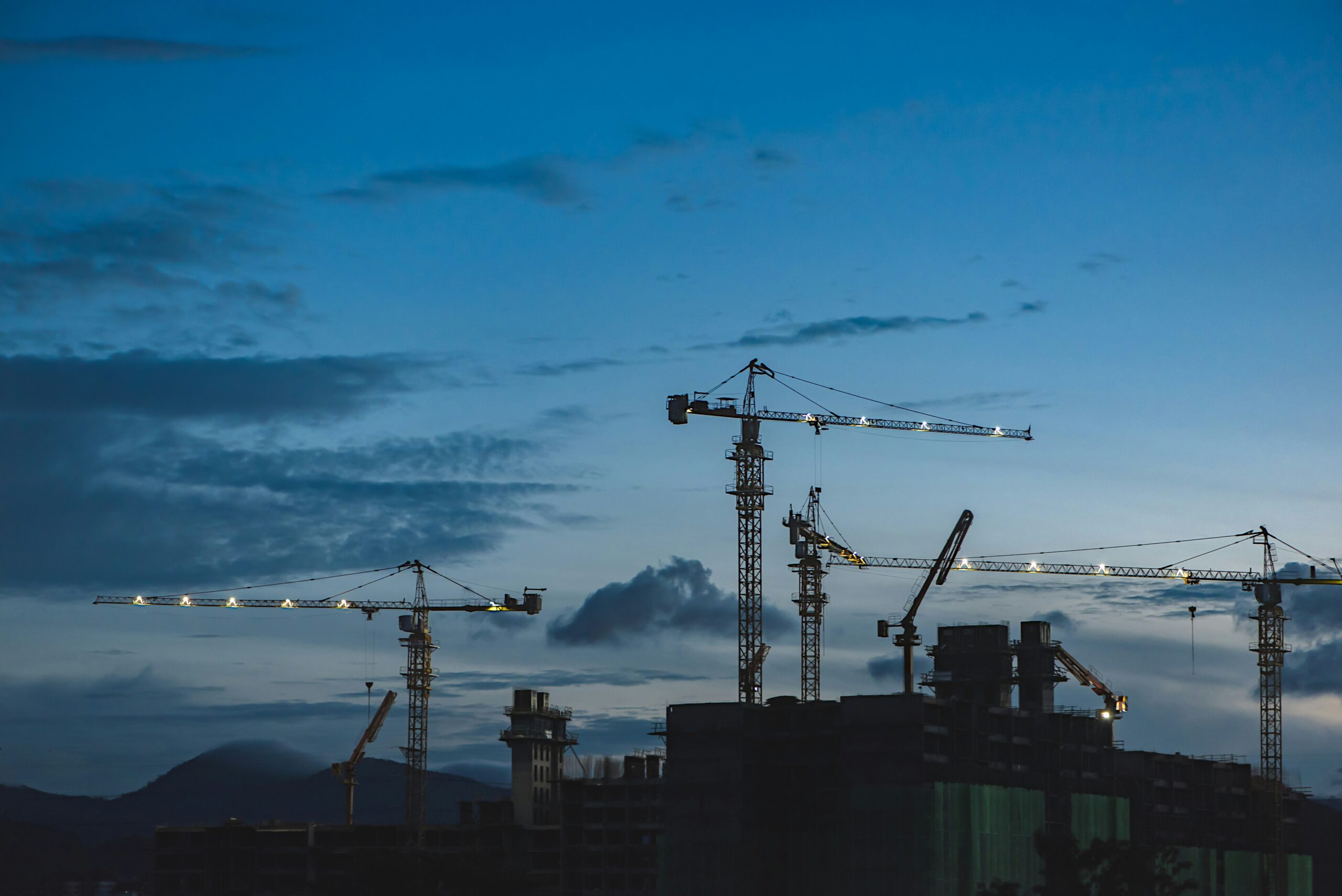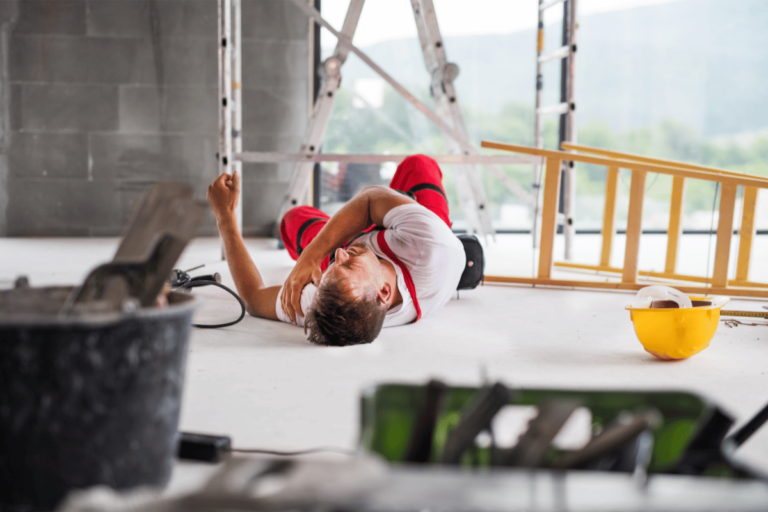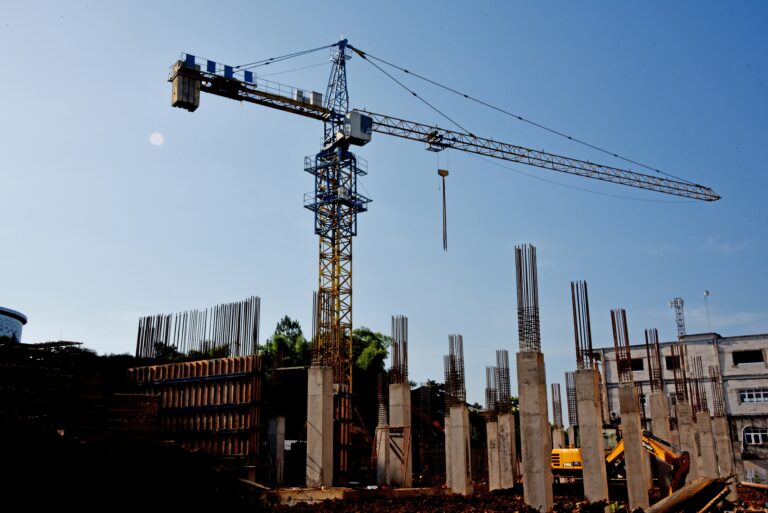Fortify Your Build: Crucial Construction Safety Checklist Guidelines
Why Construction Safety Matters
Keeping Job Sites Safe
Keeping construction sites safe isn’t just a nice-to-have; it’s a must for everyone involved. Construction sites can be risky places with dangers lurking at every corner, from heights to heavy machinery. That’s why having a solid construction safety checklist can make a world of difference. By using it, you make sure every part of the site gets the attention it needs.
Regular safety inspections aren’t just red tape; they’re serious business. Inspectors check work areas, machinery, and protective gear to spot any dangers and make sure everyone follows the rules. According to doForms, these inspections are systematic and catch risks you might otherwise miss. Here’s where they focus:
| Inspection Focus Areas | Why It Matters |
|---|---|
| Work Areas | Identify safety issues and eliminate hazards |
| Machinery and Equipment | Make sure they’re safe and work right |
| Fall Protection Systems | Verify they’re in place and working |
| Personal Protective Equipment | Check if PPE is available and in good shape |
| Handling Hazardous Materials | Ensure they’re managed safely |
Good safety protocols mean fewer accidents and a more productive team. When workers feel safe, they can do their jobs better and faster, with fewer interruptions from mishaps.
Training is a big piece of the puzzle too. Ongoing construction safety training keeps workers up-to-date on the best practices and safety laws. These training sessions should cover how to use equipment correctly, what to do in an emergency, and why wearing safety gear is non-negotiable.
Beyond inspections and training, practical construction site safety tips can build a strong safety culture in your team. Open chats about safety concerns and regular safety meetings make sure everyone knows that keeping safe isn’t just a top-down order but a team effort.
Putting effort into safety measures cuts down on accidents and builds a work culture where safety is part of the daily routine. When everyone values safety, not only does the workplace become safer, but it also becomes a more productive and positive place to be.
Construction Site Inspection
Keeping a construction site safe takes more than hoping for the best; it requires regular inspections to spot hazards before they cause accidents or injuries.
Why Bother with Safety Inspections?
The main goal of a construction site safety check is to look over different parts of the site like work areas, equipment, machines, fall protection systems, personal protective equipment (PPE), and how hazardous materials are handled (doForms). This helps make sure everyone’s following the rules and shows where improvements are needed.
Regular inspections don’t just find issues; they help build a safety-first mindset for everyone on-site. They also give a chance to teach workers about safety and remind them how important they are in keeping the site accident-free.
Must-Have Checklist Sections
A good construction safety checklist includes several key parts, each focusing on a different aspect of site safety.
| Checklist Section | Purpose |
|---|---|
| General Information | Site details like date, location, and inspector’s name |
| Working Environment | The condition of the work area, including setbacks, signs, and barriers |
| Personal Protective Equipment | Making sure all workers have the right PPE for their tasks |
| Equipment & Machinery | Safety and functionality of tools and heavy machinery |
| Emergency Equipment | Access to emergency resources like first aid kits and fire extinguishers (doForms) |
Regularly using and updating the safety checklist helps construction pros improve safety protocols, fix any issues, and make the site safer overall. For more tips, check out our resources on construction safety equipment and construction safety training. Following these practices can lead to better safety management and a safer work environment.
Keeping Construction Sites Safe: Your Guide to Equipment and Machinery
Keeping everyone safe on a construction site isn’t just important—it’s a must. Part of this involves making sure all the equipment and machinery are in top shape and being used correctly. Here’s how you’d go about it:
Checking and Double-Checking
A solid safety routine means regular checkups on all equipment and machinery. This isn’t just about passing inspections; it’s about catching problems before they cause accidents. It’s like giving your site a regular health check. You want to look at things like machine conditions, safety gear, and even how materials are handled (doForms). A good look helps you spot hazards and fix them early.
| What to Inspect | Why It Matters |
|---|---|
| Work Areas | Keep things tidy and safe from hidden dangers |
| Equipment Condition | Make sure everything works as it should and is safe |
| Safety Gear (Fall Protection) | Stay on the right side of safety rules |
| PPE (Personal Protective Equipment) | Make sure everyone’s geared up and ready |
| Handling Hazardous Materials | Follow the rules to keep everyone safe |
Inspectors dive deep, checking if machines are safe and documents are in order. They also see if the folks using them know what they’re doing (doForms).
How to Use Equipment Safely
Following safety rules isn’t just for show. It’s all about keeping accidents at bay. Here are the key practices to follow:
- Personal Protective Equipment (PPE): Everyone should wear the right gear to stay safe from job hazards.
- Lockout/Tagout Procedures: When fixing or maintaining equipment, make sure it’s locked and tagged so it can’t accidentally start up.
- Regular Training: Keep the crew up to date with safety training so they know the latest safe ways to work.
- Daily Pre-Start Inspections: Operators should give machines a once-over every day to spot any issues before they start work.
Following these steps builds a safety-first culture on site. Want to dig deeper? Check out our resources on construction safety management.
By sticking to these guidelines, you protect your team and keep machines running longer, cutting down on downtime and repair costs. For more tips, head over to our construction site safety tips.
Get Ready for Anything: Construction Site Emergency Prep
It’s wise to always be ready for the unexpected on a construction site. A solid prep plan can save lives and stop injuries before they happen.
Must-Have Emergency Gear
Check out this list of must-have emergency gear that should always be within reach on a construction site, according to our construction safety checklist:
- First Aid Kits: For those unexpected nicks and scrapes.
- Fire Extinguishers: Put out small fires before they grow.
- Emergency Response Plans: Know exactly what to do when things go sideways.
- Alarm Systems: Loud noises to warn you of dangers.
- Personal Emergency Devices: Keep everyone safe and connected.
Regular check-ups on this stuff ensure it’s all working right and everyone knows how to use it.
| Emergency Gear | Why You Need It |
|---|---|
| First Aid Kits | Quick care for cuts and bruises |
| Fire Extinguishers | Snuff out small fires fast |
| Emergency Response Plans | Step-by-step crisis guide |
| Alarm Systems | Warns of immediate threats |
| Personal Emergency Devices | Keeps individuals safe and in touch |
Everyone should know where to find this gear and how to use it. A bit of construction safety training goes a long way.
Quick Action Protocols
When chaos hits, you need a plan you can follow without thinking twice. Here’s what to focus on:
- Escape Routes: Know the fastest way out.
- Reporting Incidents: Quick and clear reporting steps.
- Assigned Roles: Everyone knows their job.
- Communication: Stay in touch and informed.
Make these plans stick with regular drills and training sessions. Being prepared means everyone can act fast and safe. For more on staying safe, check out our construction site safety tips.
Safety is a team effort. With the right gear and solid plans, you can keep everyone on the site safe and sound.
Crusher Safety Guidelines
Running a crusher safely on a construction site can be tricky, but it’s critical to follow dedicated safety measures to keep everyone out of harm’s way. Here’s a rundown of what you need to know about operating and maintaining these beasts while making sure everyone stays safe and sound.
How to Work Safely
The goal here is simple: keep everyone safe while the crusher’s doing its job. These guidelines are your go-to for cutting down on accidents, injuries, and potential damage.
What You Need to Know:
-
Personal Protective Gear (PPE): Let’s talk gear—everyone needs to have hard hats, safety glasses, gloves, and steel-toed boots whenever they’re near the crusher. No debates, no exceptions.
-
Lockout/Tagout Procedures: Before you even think about poking around the crusher for maintenance or inspections, make sure it’s locked out and tagged out. This means the machine is totally shut down and can’t be restarted by mistake.
-
Get Trained: Nobody should mess with the crusher unless they know precisely how it works, down to its controls and emergency off switches. Proper training is key.
-
Emergency Plans: What if something goes south? Everyone needs to know how to kill the machine instantly and alert the supervisor if there’s a problem. Emergency drills aren’t just for show—they could save lives.
| Procedure | What’s the Deal? |
|---|---|
| PPE | Must-have safety gear for all |
| Lockout/Tagout | Shutdown procedures to keep things safe for maintenance |
| Training | Direct and thorough training for operators |
| Emergency | Plans and drills to deal with crises |
Want more details? Check out our construction safety management resources.
Keeping Your Crusher in Top Shape
Maintenance is where good safety starts—keeping the crusher in top condition ensures it runs smoothly and safely. Here’s how you should handle maintenance:
-
Daily Morning Checks: Start your day by inspecting the crusher and flagging any obvious issues. This isn’t the time to cut corners.
-
Lubricate Regularly: Keep all moving parts well-oiled. It’s like regular check-ups for your teeth—ignore it, and you’ll be paying dearly later.
-
Tire Kicking (but for Crushers): Just like you check your tires now and then, inspect parts that wear down. Replace them when needed to keep the crusher humming.
-
Sticking to a Schedule: Maintenance should follow a strict schedule based on manufacturer’s guidelines and how hard the crusher’s been working. No freelancing here.
Hear some strange noise or feel unusual shaking? Stop everything and tell your boss. The last thing you want is to keep running a potentially faulty machine. Get qualified maintenance folks to look it over.
| Task | How Often? |
|---|---|
| Morning Inspection | Daily |
| Lubrication | Regularly according to guidelines |
| Wear Part Check | As needed or scheduled |
| Full Maintenance | Based on working conditions |
By sticking to these practices, you’ll dodge common hazards such as getting caught in moving parts, dust exposure, and tripping over stuff. For extra tips, head over to our construction site safety tips.
Stay safe out there!
Crusher Hazards You Can’t Ignore
Common Risks
Working with crushers? Here’s what you should keep an eye on. Crushers come with their share of dangers, and it’s crucial to keep these risks in mind:
- Getting Caught in Moving Parts: Watch out for the machinery’s moving components that can entangle you.
- Hit by Falling or Ejected Material: Material can fall or be ejected while the crusher operates, and you don’t want to be in its way.
- Dust and Noise Exposure: Constant dust clouds and loud noises aren’t just annoyances—they’re health hazards.
- Slips and Trips: Messy work sites can lead to accidents.
More on these risks here: Crusher Safety Checklist.
| Watched-for Risks | Description |
|---|---|
| Getting Caught in Moving Parts | Risk of entanglement with machine components |
| Hit by Falling or Ejected Material | Danger from loose or flying debris |
| Dust and Noise Exposure | Health issues from breathing dust and hearing constant noise |
| Slips, Trips, and Falls | Risks from cluttered or messy workspaces |
How to Stay Safe
Here’s how you can dodge these crusher-related dangers:
- Stop and Report: If something looks off, stop the machine and let your supervisor know right away.
- Regular Check-Ups: Make sure a qualified maintenance person looks at the crusher regularly, especially if it starts acting up.
- Keep It Clean: A tidy work area means fewer slips, trips, and falls.
- Gear Up: Helmets, goggles, ear protection—you know the drill. Wear your safety gear.
For more safety tips, peek at our guides on construction safety equipment and construction safety training. Following these tips will make your worksite much safer. Stay alert, stay safe!







